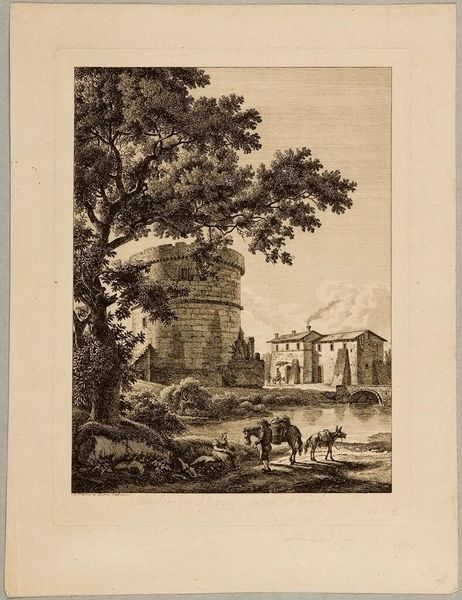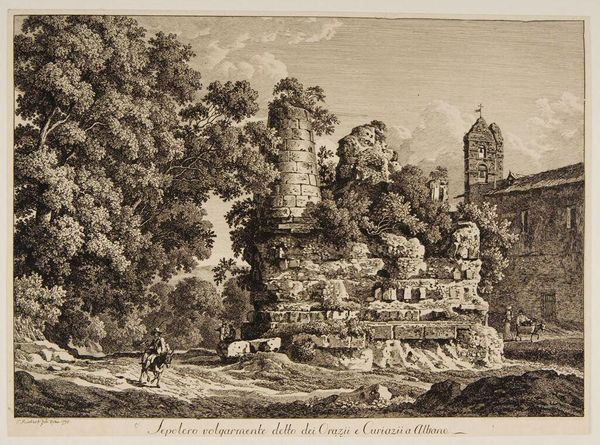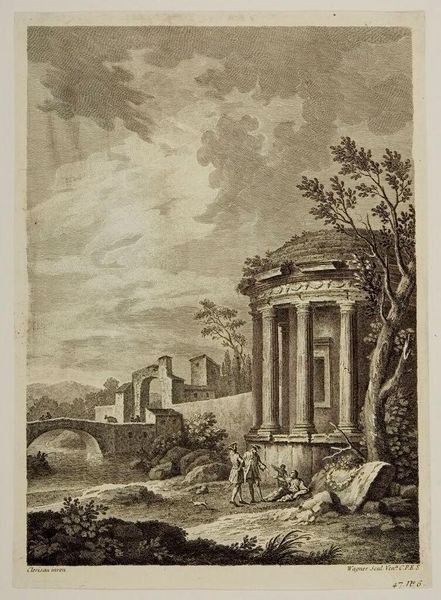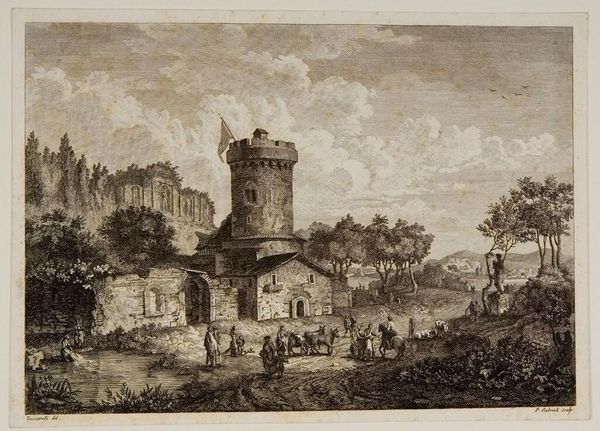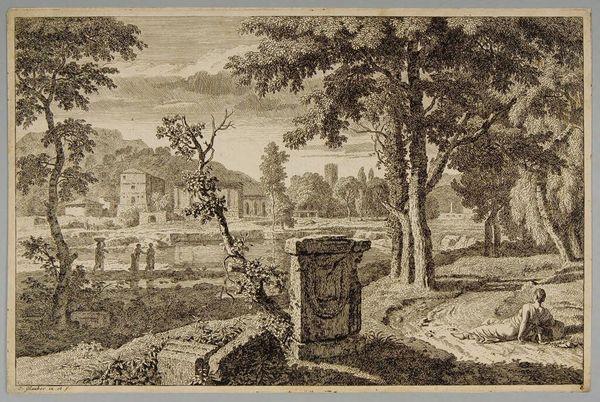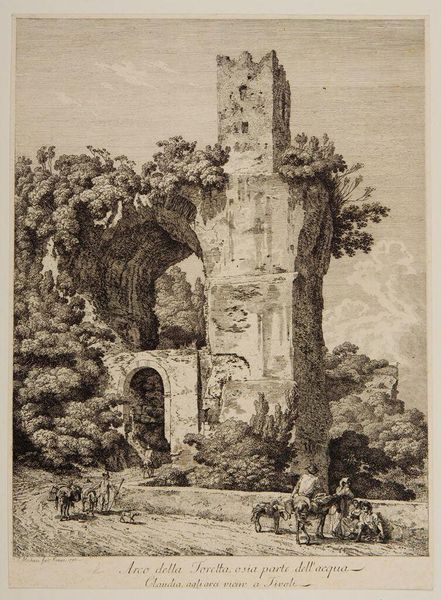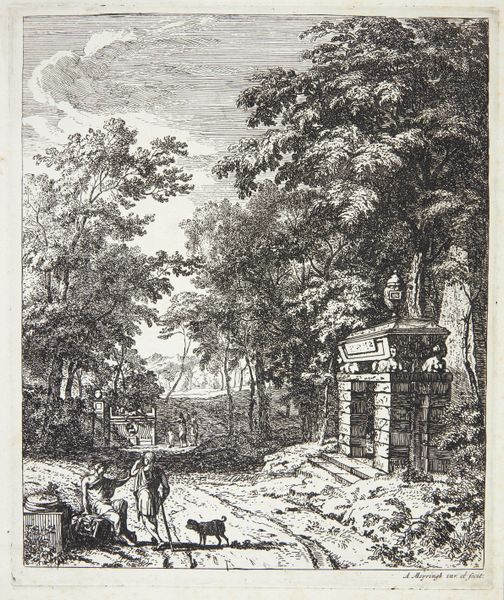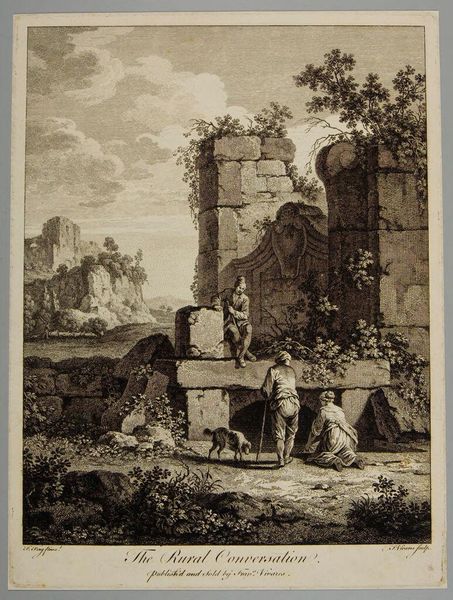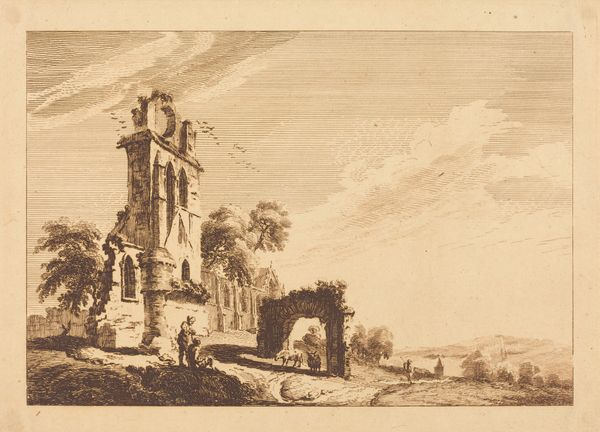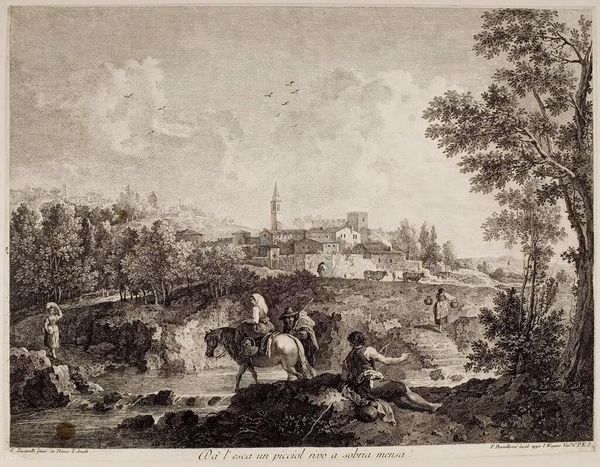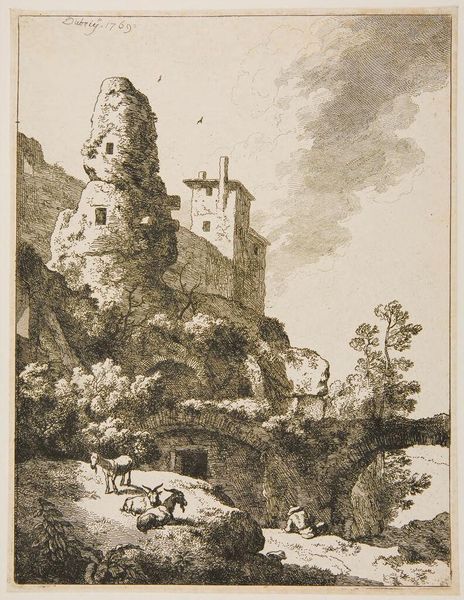
Sepolcro di Plauzio vicin' a Tivoli (Tomb of Plautius near Tivoli) 1795
0:00
0:00
Copyright: CC0 1.0
Curator: Albert Christoph Dies created this print, "Sepolcro di Plauzio vicin' a Tivoli," and it resides in the Harvard Art Museums collection. Editor: It's immediately striking—a somber stillness, captured in monochrome. A crumbling tower, rendered with meticulous detail, dominates the scene. Curator: The choice of subject reflects the Neoclassical era's fascination with ruins and the picturesque landscape. It romanticizes the decline of classical antiquity. Editor: I see it as highlighting the lives of everyday people against this backdrop of faded grandeur. A woman rests while a traveler tends to his donkey—their lives unfolding amidst the ruins. Who is this Plautius, and why does his tomb become a landscape feature? Curator: The tomb becomes a symbol of time's passage and humanity's relationship with history. Dies presents a vision of Italy steeped in classical heritage, viewed through a contemporary lens of the late 18th century. Editor: In a way, it’s also about ownership and access. Who gets to claim this history, and how does it shape the identities of those living within its shadow? Curator: True, art always reflects power dynamics. It has given me much to consider. Editor: Indeed. It’s a poignant reminder that history isn't a static monument but a living presence.
Comments
No comments
Be the first to comment and join the conversation on the ultimate creative platform.
